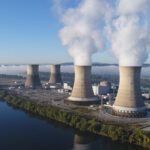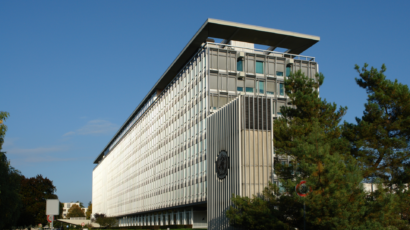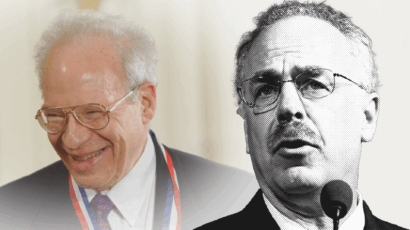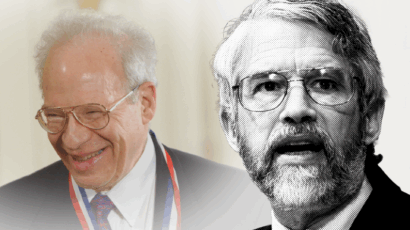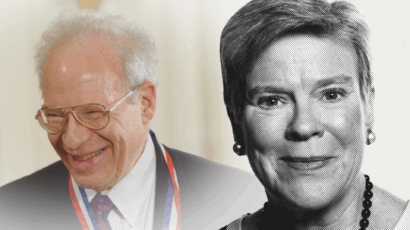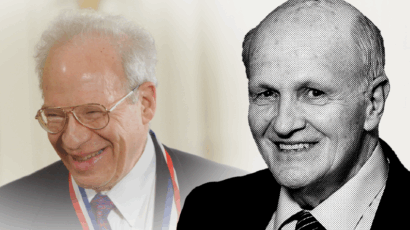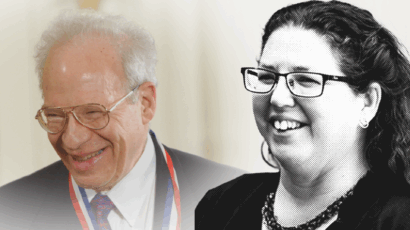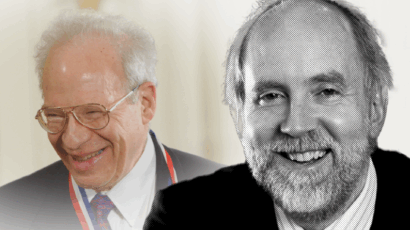Five assessments of the Fukushima disaster
By Charles Perrow | March 10, 2014
Considered in this review:
Samuels, Richard J (2013) 3.11: Disaster and Change in Japan. Ithaca and London: Cornell University Press
Nadesan, Majia H (2013) Fukushima and the Privatization of Risk. Basingstoke: Palgrave Macmillan
The Independent Investigation Commission on the Fukushima Daiichi Nuclear Accident (2014) The Fukushima Daiichi Nuclear Power Station Disaster: Investigating the Myth and Reality. Chicago: The Bulletin of the Atomic Scientists. London and New York: Routledge
The Fukushima Nuclear Accident Independent Investigation Commission (2012) "The Official Report." Tokyo: Japanese National Diet
Lochbaum, David, Edwin Lyman, Susan Q. Stranahan, and the Union of Concerned Scientists (2014) Fukushima: The story of a nuclear disaster. New York: The New Press
The four books and the government report reviewed here are all impressive. Though they cover the same ground—the disaster at the Fukushima Daiichi nuclear plant that began three years ago after a massive earthquake and tsunami—and largely draw upon the same or similar sources, there are distinct differences among them. Samuels covers the actual accident less closely than the others but has the most to say about the history of nuclear power in Japan and the best material on the “nuclear village.” Nadesan has the best information on the radiation effects on the population, which is treated very lightly by the others, and her book has the most compact but broad coverage of all the issues and events. The independent investigation review (hereafter called the citizens’ review) raises the volume of criticism and has nuggets of information that none of the others has, making it quite valuable. The review by the Japanese Diet commission (which I call the Diet report) turns up the volume even further and has important quotes from Fukushima workers and especially those working for subcontractors at the plant. The final book by Union of Concerned Scientists members David Lochbaum, Edwin Lyman, and Susan Stranahan (hereafter, the UCS review) has the most dramatic and intensive coverage of the accident, as well as superb material on the response to it of the US Nuclear Regulatory Commission.
Readers of the Bulletin will be familiar with most of the basic themes and details of the Fukushima situation, so I will take some basic knowledge for granted and highlight the distinctive contributions of the five volumes considered here, raise some questions about omissions found in most of them, and reflect upon the presumed uniqueness of the disaster.
A nuclear village too big to fail. Richard Samuels’ 3.11: Disaster and Change in Japan takes a historical approach to Fukushima. A political scientist with the skills of a historian, he makes it apparent that we should not have been surprised by the disaster. There had been others in Japan, the lessons learned were few and often forgotten, and there will be more. He bases this assessment on a fascinating history of nuclear power in Japan, an industry that was coursing 32.5 billion nuclear dollars a year through the economy at the time of the accident. In 2010, utility revenues were one quarter of all industrial revenues. “If ever a sector were too big to fail, this was it,” he writes (page 112).
The outrage evoked by the other books curdles to cynicism when we take Samuels's long view and see that the alarming corruption, the complacency, the refusal to take foreign help in crises, the political power of private industry, and so on, are just part of Japan’s culture. He has the most thorough discussion of the “nuclear village” phenomenon—the incestuous relationship between the national government, the utilities, and the press—that all other books touch on. He digs carefully into the warnings of possible disaster, noting, for example, that more than half of the members of the committee that set the size of predicted tsunamis, which affected design of the Fukushima plant, came from the nuclear industry. That committee estimated a tsunami that was just one-third the size of the surge that actually came on 3/11/11.
With a historical perspective, Samuels is able to explore an issue barely mentioned by the other books: The motivation to build so many nuclear plants on an earthquake-prone island was based not just on the island's lack of oil and coal. Also important were military considerations: Nuclear power kept the nuclear weapons option open. A former defense minister noted after the disaster (on page 124): “It is important to maintain our commercial reactors because it will allow us to produce a nuclear warhead in a short amount of time. … It is a tacit nuclear deterrent.” The current minister of defense agrees. Such an interest can trump any interest in safety.
Samuels reviews the changes made in response to public pressure for safe operations—even abandonment—of nuclear power and is skeptical of the government’s reform attempts. A long review of past natural and industrial disasters does not anticipate a promising future. Each of these books' calls for transparency should be read in light of one fact: In late 2013, the National Diet passed a draconian official state secrecy act that provides jail terms for a variety of offenses, including independent helicopter surveillance of the reactors and publishing negative information regarding Fukushima’s nuclear power station. And unfortunately, important books such as those reviewed here are likely to be disregarded by the Japanese nuclear industry; TEPCO, the utility managing the power plants at Fukushima, has published a report saying it did nothing significantly wrong.
Shifting the risk. The most general of these Fukushima books, Fukushima and the Privatization of Risk by Majia H. Nadesan, also has the broadest theme: the process through which risk is shifted from organized entities, such as governments and corporations, to private citizens. While the government and TEPCO suffered reputational and financial loses, the greatest economic and social costs have been borne by citizens, and the greatest health costs will take years, even generations, to materialize. The fallout risks will only be realized retrospectively, through epidemiological studies of populations, and Nadesan's examination of exposure levels—the most detailed of any of the books—suggests that thousands will be affected. (All of the books are skeptical of the reassuring “too small to measure” and “not worth investigating” claims of most US experts, almost all Japanese officials, and the major UN organizations. See my article, "Nuclear denial: From Hiroshima to Fukushima.") Helping to shield the government and the utility from the responsibility for the risks posed by the Fukushima catastrophe is the large degree of uncertainty about the amount of radioactive materials released, the precise locations where they settled, their take-up by plants and animals, and the extent of age and gender vulnerability of affected populations. Certainly, citizens are not shielded when such uncertainties enhance the privatization of risks.
And in Japan, the privatization is blatant and ongoing. Japanese citizens have been encouraged to return to areas that were highly contaminated by the disaster, with only minimal attempts at decontamination, thus saving the costs of the monthly stipends the displaced had received. But the privatization of risk can also be subtle. Newspaper headlines based upon expert pronouncements declare that the harm is less radiological than social—the panic and stress caused by unreasonable fears and evacuations. But these books make clear that the government is the source of the stress. The government did not explain why evacuation was necessary, or how long it would continue; it sent thousands of people from areas of low radiation to ones of high radiation; it left the aged and ill abandoned; and citizens were moved as many as six times over a few days or weeks. The stress that was supposedly more damaging than the radiation came from the government, but has been privatized by not acknowledging this source.
In the second chapter of her book, Nadesan examines the development of the industrial-military nuclear complex in Japan. In her analysis, deterrent power is gained simply by stockpiling plutonium that can be used to make weapons; as with Samuels, she offers evidence that the Japanese government had this deterrent very much in mind as it began its massive nuclear power program. The crisis-management efforts of the Japanese and US governments are well covered by all the books, but Nadesan's third chapter has the best documentation of the evidence of fallout and bio-contamination. Her fourth chapter extensively documents the harmful effects of ionizing radiation and reviews the scientific controversy regarding low-level radiation; the quality of these two chapters is not matched in any of the other books. All told, this may be the best current general volume on the accident. Others cover several topics in more depth, but none addresses the radiological hazards as seriously as she, and all lack the general theme of the privatization of risk in nuclear power. (An even more general discussion of the social construction of risk can be found in a new book by University of Colorado Boulder sociology professor Kathleen Tierney, The Social Roots of Risk.)
The citizens view. In 2011, shortly after the March 11 disaster, 30 young and mid-career professionals—including natural scientists and engineers, social scientists and researchers, businesspeople, lawyers, and journalists—formed an investigative committee. It was to be independent of any governmental organization. Chaired by Koichi Kitazawa, a former chairman of the Japan Science and Technology Agency, the committee published a report in 2012, with an English translation to follow in 2013, referred to here as the citizens review, to distinguish it from a government report with a similar name. The Fukushima Daiichi Nuclear Power Station Disaster: Investigating the Myth and Reality is a sprawling, repetitive, angry analysis that nevertheless contains valuable material on the accident that does not appear elsewhere. (A succinct summary is available here.)
The material in the preface is not very useful but the book's first chapter is splendid. It covers the first few days of the accident, examining the Japanese Cabinet and the staff at the plant. TEPCO refused to cooperate with the citizens' investigation (or with any other investigation reviewed here), and in particular refused to fully disclose videoconference footage recorded in March 2011, according to the citizens review. Nevertheless, through extensive interviews and documentary evidence, the opening chapter provides a blow-by-blow, even minute-by-minute account of the accident. It highlights something familiar to students of crises: Top management in all of the cabinet agencies experienced "elite panic" (a term coined by Rutgers' Lee Clarke), while the foot soldiers on the ground saved whatever of the day was left to be saved. The workers’ mistakes and errors are understandable, given the chaotic circumstances: working for days with little rest or nourishment, struggling in dense blackness penetrated only by feeble flashlights, dealing with radioactive water and debris all about and a failure of all instrumentation. Micromanagement from the top contributed to the few errors the plant personnel made.
The plant manager knew that venting of the unit 1 reactor vessel was necessary to prevent hydrogen explosions, but permission had to come from Tokyo. It took more than nine hours to get permission to vent and five hours to complete the job, and by then it was too late. The rods in unit one had already melted into a sludge and the pressure vessel was filled with hydrogen, which ignited a few hours later, blowing away the thick concrete walls of the reactor building in the first of two explosions.
All the major topics of the disaster are covered in the other chapters of the citizens review, but the regulatory apparatus comes in for special condemnation in the excellent discussion of the “safety myth” that came to pervade the Japanese nuclear establishment and public. But as Jessica Matthews and James Acton of the Carnegie Endowment for International Peace note in the epilogue, while the first six chapters of the citizens review presents a trenchant and persuasive critique of the weaknesses in Japanese regulations, the review does not apply the same critical standards when examining US regulations for the purposes of comparison. The expert commentary of Matthews and Acton reminds us of the parallel regulatory failures in the US and the huge inventory of spent fuel rods in US reactors.
The government's surprising report. The nongovernmental investigating committee that I've called the citizens review was established because a group of people feared that any governmental report would be a whitewash. They were wrong. One member of the private group, in fact, had to resign when the National Diet of Japan asked him to head up an investigation. This was Kiyoshi Kurokawa, a medical doctor and former president of the Science Council of Japan. The nine other members came from universities, institutes, and the Defense Ministry, were renowned in their fields, and included a former Japanese ambassador to the United Nations. The National Diet of Japan Fukushima Nuclear Accident Independent Investigation Commission held 19 meetings from December 2011 to June 2012, with extensive testimony at each meeting. In addition to these sessions, the Diet investigation included more than 900 hours of hearings and interviews with 1,167 people and site visits to nine nuclear power plants. The result is as impressive a report (henceforth called the Diet report) from an elected government body as we are likely to find.
The quotes from the public and Fukushima workers in the Diet report are striking in their detail and their emotional impact. The comments from many of the subcontractors are especially revealing and damning of TEPCO management. While this report has the best coverage of the subcontractors (the bulk of the plant’s staff), there is no mention of the extensive use of criminals from the Japanese mafia, who were hired as temporary workers during the response to the disaster.
The Diet report received widespread coverage in the press, and though the following quotations are familiar, they deserve repeating here, because they effectively summarize the report:
What must be admitted—very painfully—is that this was a disaster “Made in Japan.”… Its fundamental causes are to be found in the ingrained conventions of Japanese culture: our reflexive obedience; our reluctance to question authority; our devotion to "sticking with the program"; our groupism; and our insularity. …With such a powerful mandate, nuclear power became an unstoppable force, immune to scrutiny by civil society. Its regulation was entrusted to the same government bureaucracy responsible for its promotion. At a time when Japan’s self-confidence was soaring, a tightly knit elite with enormous financial resources had diminishing regard for anything "not invented here." …This conceit was reinforced by the collective mindset of Japanese bureaucracy, by which the first duty of any individual bureaucrat is to defend the interests of his organization.
Carried to an extreme, this led bureaucrats to put organizational interests ahead of their paramount duty to protect public safety … Only by grasping this mindset can one can one understand how Japan’s nuclear industry managed to avoid absorbing the critical lessons learned from Three Mile Island and Chernobyl; and how it became accepted practice to resist regulatory pressure and cover up small-scale accidents. It was this mindset that led to the disaster at the Fukushima Daiichi Nuclear Plant.
A real-life thriller. The last book I will discuss—Fukushima: the story of a nuclear disaster—is the best. David Lochbaum, director of the Union of Concerned Scientists (UCS) Nuclear Safety Project; Edwin Lyman, a UCS senior scientist; and Susan Q. Stranahan, a reporter for The Philadelphia Inquirer, present the most detailed and gripping account of the accident offered in these assessments. They interrupt their thriller with coverage of the culture of safety in the government and in the utility industry, and they sharply criticize the US government and especially the US Nuclear Regulatory Commission for also playing fast and loose with this risky and lethal technology and bowing to the demands of the nuclear power industry. Their lucid explanations of the technicalities of the generation of nuclear energy at each point in the crisis wonderfully characterize the complexity of the process, increased many fold by the damage of the earthquake and then the tsunami. It is a thriller that reminds one of Eric Schlosser’s recent account of the explosion of a Titan II nuclear missile during the Cold War in his book Command and Control.
The authors not only put you in the Fukushima plant, minute by minute, but provide something the other books lack: an astonishingly detailed examination of the reactions of the NRC staff in Maryland and of the group of experts the agency sent to Tokyo. With quotations of conversations, pithy emails, and NRC documents, they offer insight not only into the actions of the Japanese authorities, but also into the response in the White House, the Defense Department, and other US agencies. Finally, because of their extensive knowledge of our own nuclear industry and its “lackluster” regulator, the NRC, they are able to put the problem of nuclear safety into a larger framework than the other books.
Their critique of the NRC and its cozy relationship with the nuclear industry (which, they assert, is almost as tight as relationships in Japan) is easy for them to support; the UCS has been documenting this relationship for years. For example, on page 190, they note that it is the NRC, not its Japanese counterpart, that declared in 1985, “[E]xisting plants pose no undue risk to public health and safety.” Furthermore, the authors note that the vulnerability of US reactors in some respects is greater than those in Japan with regard to overloaded spent fuel rod pools. (Think of the Indian Point nuclear plant a few miles from the Bronx, or a South Carolina plant a few miles downstream of a huge and challenged dam.)
But they imply another important vulnerability. It is apparent from the Japanese case that the serious failures did not generally occur at the operating level, but in the top tier of management. Gregory Jaczko chaired the five-man Nuclear Regulatory Commission at the time of the accident and performed admirably, but that was not true of the other four commissioners, who eventually forced Jaczko from the commission. Over his objections, the other commissioners rejected changes to US regulations that should have been made, based on the lessons of Fukushima. The staff of the NRC, on the other hand, performed admirably, both in the crisis mode and the regulatory mode.
Surprisingly, the UCS book barely mentions any connection between nuclear weapons and its daughter, nuclear power, in contrast to the books by Samuels and Nadesan. Nor does it dwell upon the consequences of the accident in terms of low-level radiation. (For a review of these issues see "Nuclear denial: From Hiroshima to Nagasaki.") Indeed, it goes easy on the international promoter of nuclear power, the IAEA, which was late in feebly stepping up to the Fukushima plate. The UCS book also does not inquire into the evidence that a meltdown in unit 1 may have been in process immediately after the earthquake and well before the tsunami came ashore. None of the books entertains this possibility, but even though workers reported that, before the tsunami hit, cracked pipes were spilling coolant water, that a radiation alarm went off on the perimeter, and that safety devices were energized, fruitlessly, indicating the possibility of a LOCA, or loss of coolant accident. All of this reportedly came before the tsunami arrived at the plant. Since earthquakes are more frequent than tsunamis, this indication that an earthquake may have caused a loss of coolant or even a meltdown would be bad news for the nuclear power industry.
Finally, none of the books adequately deals with the potential danger of a failure of the unit 4 spent fuel pool. Nuclear power critics have noted that a collapse of the pool at unit 4, now being slowly emptied of used fuel assemblies, or even an inadvertent jostling of the assemblies during removal, could release radiation that would require the evacuation of Tokyo. Even if only the Fukushima plant had to be evacuated, that would mean that the 11,000 fuel assemblies in the reactors and the common pool could not be constantly cooled because workers could not survive the radiation. The former Japanese Ambassador to Switzerland, Mitsuhei Murata, has said that full-scale releases from Fukushima, with 14,000 times as much radiation as the Hiroshima nuclear bomb, “would destroy the world environment and our civilization.”
Together, we make the world safer.
The Bulletin elevates expert voices above the noise. But as an independent nonprofit organization, our operations depend on the support of readers like you. Help us continue to deliver quality journalism that holds leaders accountable. Your support of our work at any level is important. In return, we promise our coverage will be understandable, influential, vigilant, solution-oriented, and fair-minded. Together we can make a difference.
Topics: Book Review, Nuclear Energy, Technology and Security



